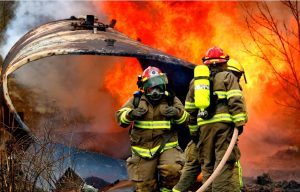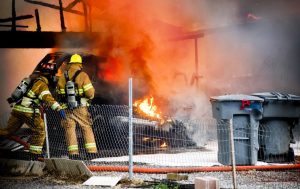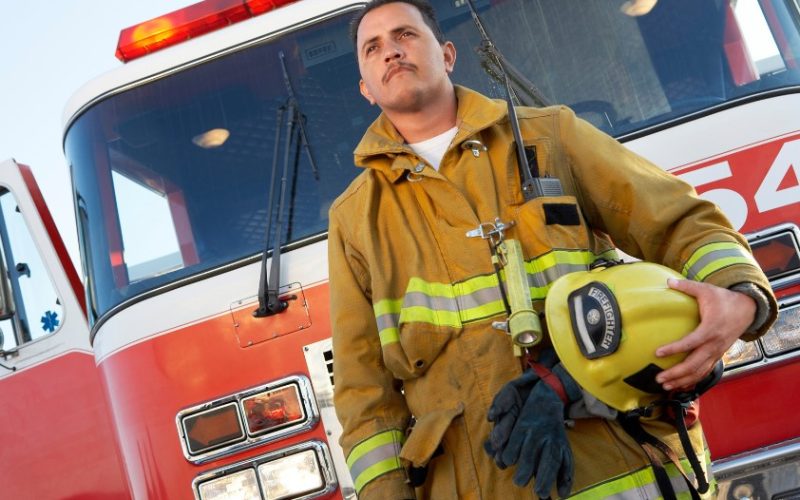Introduction
Becoming a firefighter in Ontario is a rewarding and challenging career that requires extensive training and preparation. In Ontario, the hiring process for firefighters is rigorous, and candidates must meet a variety of physical, mental, and educational requirements. In this guide, we will explore the steps required to become a firefighter in Ontario, including the educational requirements, physical fitness standards, additional certifications and skills, and the hiring process.
Requirements to Become a Firefighter in Ontario

To become a firefighter in Ontario, certain requirements must be met.
- The Ontario Firefighters Association states that applicants must be at least 18 years old and legally able to work for any employer in Canada as a citizen or landed immigrant at the time of application.
- In addition, completion of secondary school is usually required, and it may be necessary to complete a college program in fire protection technology, fire science, or a related field. Firefighting and emergency medical care training courses are also provided and vary in length depending on the program.
Moreover, the Ontario Association of Fire Chiefs highlights that Ontario firefighters are engaged in public awareness and public education, complete training activities, conduct post-fire salvage and cleanup, conduct pre-planning activities, and respond to fires and medical emergencies based on the five pillars of Emergency Management, namely Prevention, Mitigation, Preparedness, Response, and Recovery.
Training and Education for Firefighters in Ontario
In Ontario, to become a firefighter, individuals need to complete a recognized Pre-Service Firefighter Program, which includes training and education requirements.
Moreover, an Ontario Secondary School Diploma (OSSD) or equivalent, which includes a Grade 12 English and Grade 12 Mathematics credit, is required for admission to programs for firefighter and fire systems. Moreover, senior science and technology credits are frequently advised and occasionally needed.
Upon completing the training requirements through a recognized program, individuals will be eligible to complete the certification examinations and practical skills evaluation. Candidates have a maximum of three attempts for each written examination before additional training is required.
How to Become a Firefighter in Ontario
To become a firefighter in Ontario, according to the Ontario Fire Administration Inc., applicants must be at least 18 years old at the time of application and legally entitled to work for any employer in Canada.
In addition, completing a pre-service firefighter program is recommended. The Ontario Fire Marshal (OFM) provides certification examinations and practical skills evaluations for new firefighter candidates through recognized colleges of applied art and technology (CAATs) and registered private career colleges (PCCs).
Applicants will also need to meet the physical fitness requirements set by the specific fire department they are applying to.
Once the minimum requirements have been met, candidates will need to complete the Ontario Fire Administration Inc.’s Candidate Testing Services (CTS) program. This involves a series of tests to assess the candidate’s physical abilities, cognitive skills, and psychological suitability for the job
Interview and Selection Process for Ontario Firefighting Jobs
The interview and selection process for firefighting jobs in Ontario can vary depending on the organization, but there are some common steps that most candidates can expect.
- Application: The first step is to apply for a specific firefighting job that is open or will be opening soon. The application may include a resume, cover letter, and other supporting documents.
- Written Test: If the application is selected, the candidate will be invited to take a written test, which assesses their knowledge of firefighting and related fields. This test may include multiple-choice questions, short answers, and essays.

- Physical Test: After passing the written test, the candidate will be invited to take a physical test, which measures their physical fitness and ability to perform firefighting duties. This test may include tasks such as climbing stairs, carrying equipment, and dragging hoses.
- Panel Interview: If the candidate passes the physical test, they will be invited to a panel interview, where they will meet with a group of firefighters and other professionals to discuss their qualifications, experience, and suitability for the job.
- Medical Examination: After passing the panel interview, the candidate will be asked to undergo a medical examination to ensure they are physically and mentally fit for the job.
- Background Check: Once the medical examination is completed, a background check will be conducted to verify the candidate’s criminal record, driving history, credit history, and other relevant information.
- Job Offer: If the candidate passes all of the above steps, they will be offered a job as a firefighter in Ontario.
It is important to note that the selection process for firefighting jobs in Ontario can be highly competitive, and it may take several attempts before a candidate is successful.
Physical Fitness Standards for Ontario Firefighters
As a firefighter, you’ll need to meet the physical fitness standards for Ontario fire departments. The Physical Abilities Test (PAT) is used by all Ontario Fire Departments as an assessment tool and it’s administered by the Professional Fire Fighters Association of Ontario (PFFAO).
The Ontario Fire Department is committed to ensuring their firefighters can maintain a high level of physical fitness, to safely and effectively perform their duties throughout their careers. Ontario firefighters must be physically capable of performing demanding tasks, as strains and sprains are the number one injury on the fire ground.
In addition, lifting and carrying objects of up to 80 pounds are the most commonly encountered applications of strength and endurance in firefighting.
To ensure that firefighters meet the physical fitness standards, the Ontario Fire Department implements the Firefighter Physical Aptitude Job-Related Tests, which include six sequential events, including the Equipment Carry/Vehicle Extrication, Charged Hose Advance, Weighted Sled Pull, Forcible Entry Simulation, Victim Rescue, and Ladder Climb.
Additional Certifications and Skills for Ontario Firefighters
You can also earn several certifications and skills that will make you more marketable in the job market.
Ontario firefighters can pursue additional certifications and skills to enhance their capabilities. According to Ontario.ca, Ontario firefighters can take additional fire prevention and Ontario Fire Code courses, including Legislation Courtroom Procedures, Fire Code Division B Parts 2, 3, 4, and 6, which cover fire safety, fire protection equipment, industrial, commercial, hazardous materials, flammable and combustible liquids.
Firefighters in Ontario are also required to meet specific certification standards that align with their level of fire protection service. Municipalities and territories without a municipal organization are required to meet the certification standard, as outlined in the Firefighter Certification proposal.
Conestoga College offers a Fire Service Skills program that trains students on the same types of equipment used across the Ontario Fire Service. Graduates of the program are eligible to receive two certificates, one from the Mental Health Commission of Canada for The Working Mind for First Responders, and one from LivingWorks
Advancement Opportunities for Ontario Firefighters

Firefighters in Ontario can further their careers by advancing through the ranks. Firefighters typically start as probationary firefighters and may advance to the assistant fire chief, deputy chief, shift lieutenant, and deputy shift lieutenant.
In Canada, firefighters are rated higher than pharmacists and airline pilots in terms of professional respect and trust. Firefighters in Ontario respond to fires and medical emergencies, participate in public awareness and education campaigns, carry out training exercises, carry out post-fire salvage and cleanup tasks, carry out pre-planning tasks, and more.
Overall, with a strong demand for firefighters and expanding training opportunities across the province, there are many opportunities for growth and advancement in the field of firefighting in Ontario.
Conclusion
In conclusion, firefighters are not just ordinary professionals, but heroes who put their lives on the line to save others. Becoming a firefighter is not an easy task, as it requires a combination of physical and mental strength, as well as a deep commitment to serving the community. Hope, this article helps you how to become a firefighter in Ontario.
FAQs on how to become a firefighter in Ontario
1. What medical conditions stop you from being a firefighter?
The presence of a history of cardiovascular or circulatory disease, diabetes, epilepsy, or hypertension. Eczema, psoriasis, or contact dermatitis, and also the fear of heights.
2. Can you be a firefighter if you can’t swim?
Firefighters are typically expected to be capable of doing in-water rescues when necessary as part of their job. Thus, firemen must possess swimming skills and water confidence at the levels specified in the FRS’s core standards.
3. How much do firefighters make in Ontario?
The Firefighters in Ontario make approximately $80,000 per year.










